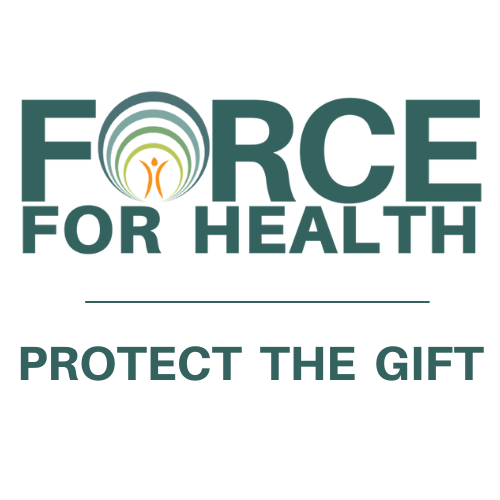Of course, no one wants to hear they have cancer.
But if you or someone in your familia has a brain tumor, it is natural to wonder what life will look like.
This is what we call “quality of life” (QoL), or an individual’s sense of well-being and ability to enjoy and participate in life.
“For those living with a brain tumor, QoL may encompass a wide range of physical, psychosocial, and emotional concerns stemming from loss of functionality and changes in personality,” according to the National Brain Tumor Society (NBTS).
From rehabilitation to mental health to return-to-work resources, let’s dive deeper into QoL and what it means for someone with a brain tumor.
Facing a Brain Tumor Diagnosis
A brain tumor or other cancer diagnosis is life-changing.
The National Cancer Institute (NCI) highlights several of these daily impacts:
- Rearrange tasks and routines in your life as you start treatment.
- Deal with symptoms and side effects that affect both your body and your emotions.
- Learn new ways of talking to your loved ones and to your health care team.
- Ask a lot of questions on how to adjust to all the new issues that cancer brings.
These changes can impact your physical and mental QoL.
“The physical side effects of cancer can affect your emotions. Often if our body doesn’t feel good, we don’t feel good mentally either. For example, if someone is in pain, they might get cranky with others. Or if people are fatigued, it might make them feel sad,” according to the National Cancer Institute.
Treatment can also have an impact on QoL.
For brain tumors, treatment plans can include regular MRIs, surgery, chemotherapy, and radiation therapy. When it comes to side effects of treatment, individuals diagnosed with a brain tumor may experience fatigue, pain, or cognitive changes, depending on the tumor and treatment among other factors.
People need support in many areas to address their QoL after cancer.
Life with a Brain Tumor: Exploring Rehabilitation Options
Someone with a brain tumor could experience changes in their thinking, speaking, physical strength or coordination, or ability to do normal, everyday tasks.
That is where rehabilitation comes in.
Rehabilitation for patients with brain tumors consist of four main types: cognitive rehab, speech therapy, physical therapy, and occupational therapy.
Cognitive rehab. This helps restore cognitive function — relearning specific mental abilities, strengthening unaffected abilities, or substituting new ones to compensate for lost ones.
“Rehab can help you learn more about the changes in how your brain works and how to deal with them,” according to the University of Rochester Medical Center.
Speech therapy. This can help improve speaking and the way speech sounds by focusing on how one’s lips, teeth, mouth, tongue, and muscles create clear speech that can be understood.
“Depending on their tumor’s location, some patients with brain tumors face ongoing speech and language challenges, including difficulty speaking, finding words, and slurred speech,” according to NBTS.
Physical therapy. This can help a patient regain lost motor skills or muscle strength.

A common symptom for people living with brain tumors is imbalance, and physical therapy can help assess a patient’s fall risk and provide strategies to improve their balance.
Occupational therapy. This helps a patient improve their QoL by helping them get back to daily activities.
As far as timing, rehabilitation can occur right after primary treatment, later in the treatment process, or even after primary treatment is completed. Rehab might happen over a set period of time, on and off, or as needed.
Life with a Brain Tumor: Finding Mental Health Support
Mental health is a big part of QoL after cancer.
A brain tumor diagnosis, for example, can cause people to question their identity and roles within family, careers, and other aspects of everyday life.
“Following a brain tumor diagnosis, it is common to want things to return to ‘normal.’ However, patients and family members often discover that [mental challenges remain]” according to MD Anderson Cancer Center.
It is also normal for someone to experience the fear of a brain tumor coming back.
MRIs and other imaging scans that often are part of a normal treatment plan can cause “scanxiety” – stress, anxiety, worry, and fear leading up to, during, and after any medical imaging – which can impact QoL for many people living with a brain tumor.
“Scanxiety can present in many distinctive ways, involving different emotions and feelings at various points throughout the scan process,” according to NBTS.
Patients experiencing scanxiety should discuss their concerns with their healthcare team, among other ways to reduce their scanxiety symptoms.
“Communicate with your health care team about what makes you anxious or worried. For example, if you’re feeling claustrophobic in the MRI, some medications and techniques can work to make sure those experiences are not so unpleasant,” according to NBTS.
In addition, someone with scanxiety can try meditation, reciting affirming phrases, physical activity, and finding help from a support group, religious organization, or counselor.
People with brain tumors can seek support from other people with similar diagnoses, through NBTS, American Brain Tumor Association (ABTA), and Imerman Angels.
Many people with brain tumors also seek professional counseling, often with therapists who are knowledgeable about the challenges faced during cancer, as well as support through their church or spiritual community.
Counseling resources and other supportive care can be found through the National Brain Tumor Society and Cancer.Net.
“Counselors who focus on cancer usually know more about how people react to having cancer. A counselor’s experience with cancer, whether personal or professional, helps you see that your feelings are normal,” according to the American Cancer Society.
Life with a Brain Tumor: Other Kinds of Care
In addition to options designed to remove or treat their tumors, people with brain tumors may receive other types of care.
Palliative care – specialized medical care for people living with a serious illness like a brain tumor, as well as their families – aims to improve health-related QoL.
Palliative care focuses on providing support and relief from symptoms and stress.
“Palliative care is not focused on curing an illness, but it can be provided in combination with curative care like radiation and chemotherapy, which have the goal of treating disease,” according to NBTS. “Also, palliative care is appropriate at any time over the course of one’s illness, unlike hospice care, which includes an element of time.”
Types of palliative care include physical, mental and emotional, social, financial, and spiritual.
“Spiritual care can support patients and their loved ones through times of need. People may search for meaning, hope, solace, or connection to something greater than themselves,” according to NBTS. “Palliative care might include speaking with a hospital chaplain for spiritual support or connecting with a religious community.”
Additionally, some people with brain tumors find that seeking information about “right-to-die” support is comforting or helpful. Patients can find resources on this topic in English and Spanish.
Additionally, people with brain tumors may seek reproductive care to reduce the impact of treatment (especially chemotherapy) on their fertility.
Fertility preservation is the process of saving or protecting eggs, sperm, or reproductive tissue so that a person can use them to have biological children in the future.
Both the American Society of Clinical Oncology (ASCO) and the American Society of Reproductive Medicine (ASRM) recommend that every patient of reproductive age diagnosed with a malignancy that will require anti-cancer treatment should see a reproductive specialist.
“It doesn’t mean that they have to go through fertility preservation, but at least they are fully informed what their options are and what potential obstacles are in the particular clinical case the patient is presenting,” said Dr. Anna Sokalska, the director of the Fertility Preservation Program at Stanford University School of Medicine.
Explore more about fertility preservation and the impact of brain tumors on fertility via NBTS.
Life with a Brain Tumor: Work and Legal Resources
People with brain tumors often wonder how quickly they will be able to return to work or study after completing treatment – or even if they will be able to return at all.
Answers to these questions depend on the person, the diagnosed brain tumor, the treatment, and the therapy or rehab.
Talking to your healthcare team is a first step.
“Explain [to your healthcare team] how you’re feeling and functioning to ensure going back to work is right for you,” according to the National Cancer Institute.
But how can you approach your workplace?
Start by knowing your rights when it comes to work.
The American Brain Tumor Association created “Returning to Work After a Brain Tumor Diagnosis: Accessing Reasonable Accommodations,” a handbook that provides resources to help navigate the complexities of work after a brain tumor diagnosis.
The handbook provides information on state fair employment laws, how to ask for a reasonable accommodation, and what reasonable accommodations might be useful to someone with a brain tumor, among several other important topics.
The Brain Tumour Charity provides a framework for telling your telling your employer.
People with brain tumors can also contact their human resources department or student assistance office to find out what resources are available for sick leave, long-term disability, and other assistance. The International Low Grade Glioma Registry offers advice to people with brain tumors on navigating disability benefits.
There are free and low-cost resources available to help with legal and financial issues, including identifying accommodations needed, advocating with employers or schools, and more through the Triage Center in English and Spanish.
Additionally, patients and care partners can explore the Cancer Legal Resource Center and Cancer and Careers, which empower and educate people with cancer or in survivorship to thrive in the workplace by providing expert advice, interactive tools, and educational events.
For employers, the Job Accommodation Network (JAN) helps recognize the contributions that qualified workers with disabilities add by providing accommodation solutions, trusted strategies, and practical guidance on the Americans with Disabilities Act.
“Job accommodations play a vital role in creating inclusive workplaces, advancing the goals of the ADA, and increasing employment opportunities for people with disabilities,” according to JAN.
Life with a Brain Tumor: Financial Resources
Along with treatment costs, patients with brain tumors could experience unexpected or additional costs like transportation to and from treatment, and everyday expenses affected by not being able to work.
“If you or someone you love has been diagnosed with a brain tumor, you may be facing not only physical and emotional challenges, but also financial burdens,” according to NBTS.
Fortunately, there are financial assistance resources such as grants, federal and state programs, medication assistance programs, and more available to help alleviate some of these burdens.
The NBTS financial assistance page lists federal and state resources, general financial assistance programs, college scholarships and financial aid, financial assistance for adolescents and young adults, and more.
For example, the Patient Advocate Foundation is a national non-profit organization that provides case management services and financial aid to Americans with chronic, life-threatening and debilitating illnesses, such as brain cancer.
Similarly, the PAN Foundation offers financial assistance to help people with serious illnesses afford their out-of-pocket treatment costs and improve their quality of life.
“We serve as a critical safety net for people who are living with chronic and rare diseases and who, despite their insurance coverage, need more help,” according to the PAN Foundation. “We help our patients improve their quality of life while we also advocate for long-term policies that help improve healthcare access, affordability, and equity for all.”
Life with a Brain Tumor: The Latino Experience
Culturally relevant care is important, especially for Latinos, who experience discrimination and implicit bias in the doctor’s office, a systemic lack of social support, and language barriers.

“Language barriers can be a significant deterrent to health. People who don’t speak English well are less likely to seek health care or receive health information,” according to a 2021 study.
But patients in the U.S. have a legal right to have an interpreter present at medical appointments, and to have materials available in their preferred language.
Patients and care partners are active participants in care planning. Asking questions, talking about the patient’s goals and priorities, and advocating for the patient are beneficial for everyone involved.
NBTS provides a list of key questions to ask at each stage of the brain tumor experience, including diagnosis, before surgery, after surgery, treatment, and more.
Many Latinos also face a lack in access to healthcare based on immigration status.
Immigrants can face challenges to accessing and using healthcare in the U.S. due to higher uninsured rates, affordability challenges, linguistic and cultural barriers, and immigration-related fears, according to a 2023 study.
This ultimately has negative implications for their health and financial security.
“Generally, non-citizens have higher uninsured rates due to limited access to employer-sponsored coverage; eligibility restrictions for government-sponsored programs, and cultural and language barriers to enrollment,” according to Triage Cancer.
The Triage Center also provides a Quick Guide to Health Care Rights of Immigrants, which highlights resources and information on programs and eligibility based on immigration status.
How You Can Help Improve Quality of Life for Patients with Brain Tumors
Everyone’s cancer journey is unique.
But sharing your challenges and successes, and how they’ve affected your quality of life, can go a long way in improving the experience of others who experience cancer.
People with brain tumors often connect with peer-to-peer support networks like NBTS, ABTA, and Imerman Angels to share and get support.
People with brain tumors can also help the greater good through research participation.
You can join the Brain Tumor Project, a patient-partnered research study open to anyone in the U.S. or Canada who has been diagnosed with a primary brain tumor.
NCI-Connect also aims to advance understanding of rare central nervous system (CNS) cancers in adults.
You can also join the International Low Grade Glioma Registry.
The registry is a partnership of researchers, clinicians, patients, and care partners working together to focus on helping people initially diagnosed with low grade glioma brain tumors.
Tony Rentas, a native of Puerto Rico and a veteran of the U.S. Army, joined the Low Grade Glioma Registry after he was diagnosed with brain cancer.
“They’re taking this amazing, amazing initiative, where they’re trying to learn as much as they can about low grade glioma,” he said. “One of the biggest things that I wanted to do is help people as much as I can.”
Explore the full list of NBTS patient support resources!
Editor’s Note: This article is part of a partnership between Salud America! at UT Health San Antonio and the International Low Grade Glioma Registry to raise awareness of brain tumors, real people with brain tumors, quality of life, and caregiving as part of Brain Tumor Awareness Month in May. This work is supported by a grant to Yale University by the National Cancer Institute (1 U2C CA252979-01A1). Its contents are the authors’ sole responsibility and do not necessarily represent official NIH views.
The post What Does Life Look Like with a Brain Tumor? appeared first on Salud America.






